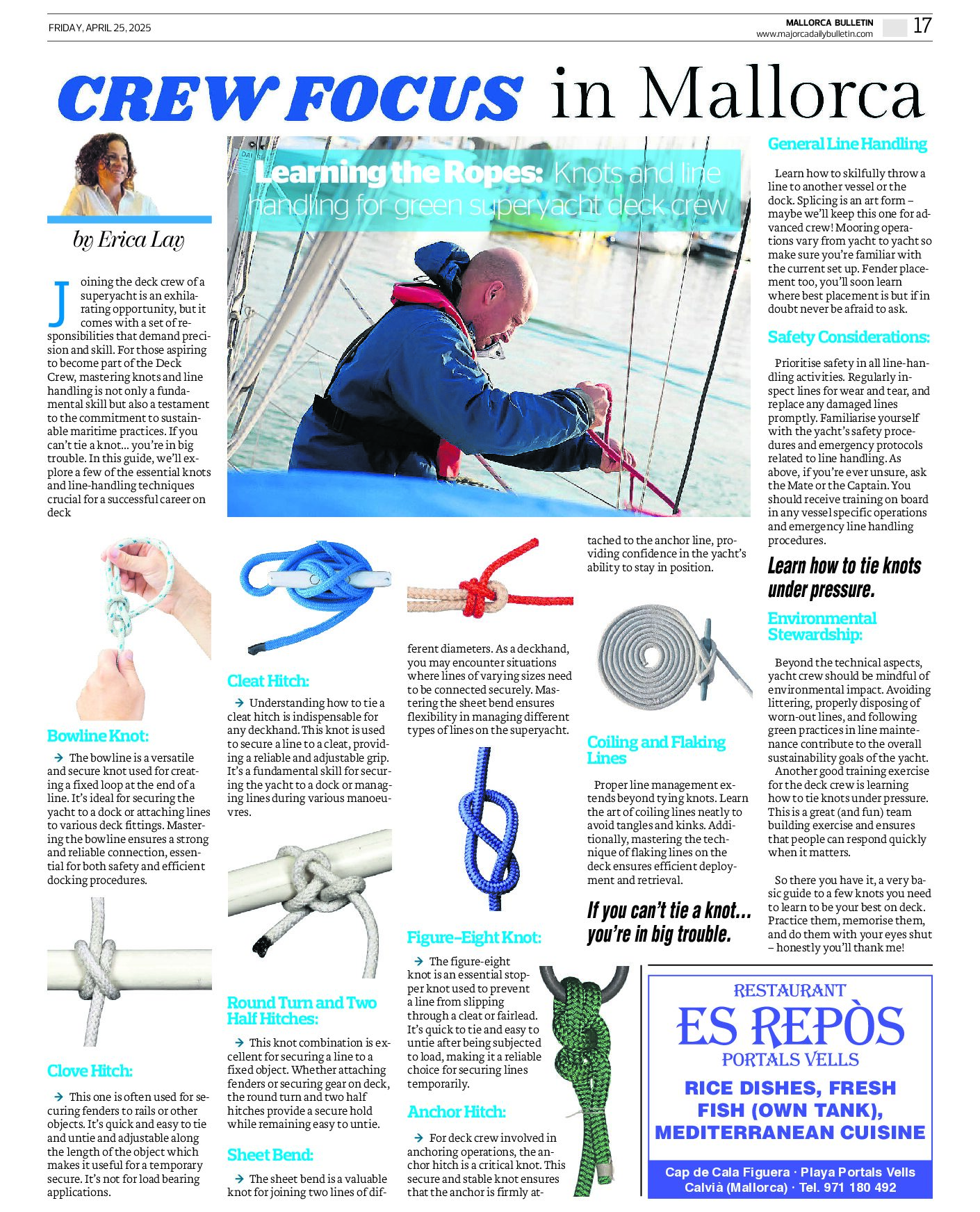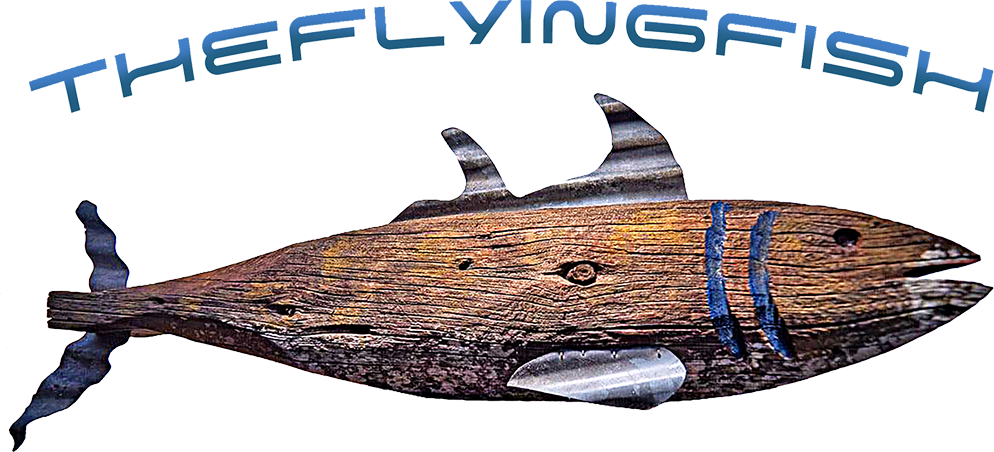Hub- Learning the Ropes: Knots and Line Handling for Green Superyacht Deck Crew

With Courtesy of Erica Lay & The Daily Mallorca Bulletin. #25/0858. Erica Lay owner of EL CREW International Yacht Crew Agency http://www.elcrewco.com/ erica@elcrewco.com
Learning the Ropes: Knots and Line Handling for Green Superyacht Deck Crew
Joining the deck crew of a superyacht is an exhilarating opportunity, but it comes with a set of responsibilities that demand precision and skill. For those aspiring to become part of the Deck Crew, mastering knots and line handling is not only a fundamental skill but also a testament to the commitment to sustainable maritime practices. If you can’t tie a knot… you’re in big trouble. In this guide, we’ll explore a few of the essential knots and line-handling techniques crucial for a successful career on deck.
Bowline Knot:
The bowline is a versatile and secure knot used for creating a fixed loop at the end of a line. It’s ideal for securing the yacht to a dock or attaching lines to various deck fittings. Mastering the bowline ensures a strong and reliable connection, essential for both safety and efficient docking procedures.
Clove Hitch:
This one is often used for securing fenders to rails or other objects. It’s quick and easy to tie and untie and adjustable along the length of the object which makes it useful for a temporary secure. It’s not for load bearing applications.
Cleat Hitch:
Understanding how to tie a cleat hitch is indispensable for any deckhand. This knot is used to secure a line to a cleat, providing a reliable and adjustable grip. It’s a fundamental skill for securing the yacht to a dock or managing lines during various manoeuvres.
Round Turn and Two Half Hitches:
This knot combination is excellent for securing a line to a fixed object. Whether attaching fenders or securing gear on deck, the round turn and two half hitches provide a secure hold while remaining easy to untie.
Sheet Bend:
The sheet bend is a valuable knot for joining two lines of different diameters. As a deckhand, you may encounter situations where lines of varying sizes need to be connected securely. Mastering the sheet bend ensures flexibility in managing different types of lines on the superyacht.
Figure-Eight Knot:
The figure-eight knot is an essential stopper knot used to prevent a line from slipping through a cleat or fairlead. It’s quick to tie and easy to untie after being subjected to load, making it a reliable choice for securing lines temporarily.
Anchor Hitch:
For deck crew involved in anchoring operations, the anchor hitch is a critical knot. This secure and stable knot ensures that the anchor is firmly attached to the anchor line, providing confidence in the yacht’s ability to stay in position.
Coiling and Flaking Lines
Proper line management extends beyond tying knots. Learn the art of coiling lines neatly to avoid tangles and kinks. Additionally, mastering the technique of flaking lines on the deck ensures efficient deployment and retrieval.
General Line Handling
Learn how to skilfully throw a line to another vessel or the dock. Splicing is an art form – maybe we’ll keep this one for advanced crew! Mooring operations vary from yacht to yacht so make sure you’re familiar with the current set up. Fender placement too, you’ll soon learn where best placement is but if in doubt never be afraid to ask.
Safety Considerations:
Prioritise safety in all line-handling activities. Regularly inspect lines for wear and tear, and replace any damaged lines promptly. Familiarise yourself with the yacht’s safety procedures and emergency protocols related to line handling. As above, if you’re ever unsure, ask the Mate or the Captain. You should receive training on board in any vessel specific operations and emergency line handling procedures.
Environmental Stewardship:
Beyond the technical aspects, yacht crew should be mindful of environmental impact. Avoiding littering, properly disposing of worn-out lines, and following green practices in line maintenance contribute to the overall sustainability goals of the yacht.
Another good training exercise for the deck crew is learning how to tie knots under pressure. This is a great (and fun) team building exercise and ensures that people can respond quickly when it matters.
So there you have it, a very basic guide to a few knots you need to learn to be your best on deck. Practice them, memorise them, and do them with your eyes shut – honestly you’ll thank me!
